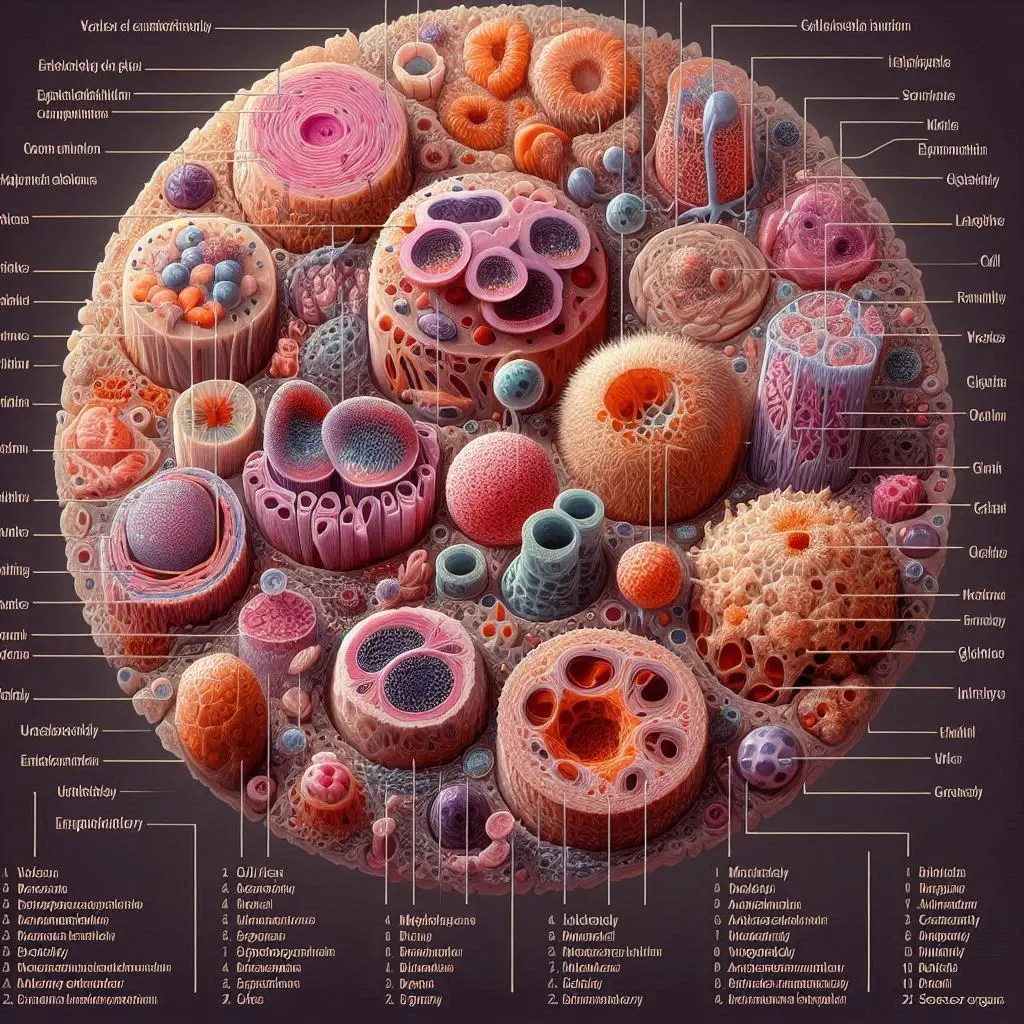Cell Inclusions

Introduction to Cell Inclusions
Cell inclusions are fascinating components of cellular biology. These non-living substances reside within the cytoplasm of cells and serve various essential functions. Unlike organelles, which are membrane-bound and actively participate in metabolic processes, cell inclusions are often storage forms of nutrients or other materials. This article will delve into the types of cell inclusions, their functions, and their significance in different organisms.
What Are Cell Inclusions?
Cell inclusions are non-living materials found within cells. They can be classified as ergastic substances because they do not carry out metabolic activities. Instead, they serve primarily as storage sites for various substances that cells may need at different times. These substances can include nutrients, pigments, and secretory products.
Characteristics of Cell Inclusions
- Non-living: Inclusions do not engage in metabolic processes.
- Diverse Forms: They can take on various shapes and sizes depending on their function.
- Temporary Structures: Many inclusions can form and dissolve based on the cell’s needs.
Types of Cell Inclusions
Understanding the different types of cell inclusions helps clarify their roles within cells. Here are the primary categories:
1. Glycogen
Glycogen is a polysaccharide that serves as a critical energy reserve in animal cells. It is especially abundant in liver and muscle tissues. Under electron microscopy, glycogen appears as clusters or rosettes resembling ribosomes. When energy is needed, enzymes break down glycogen into glucose molecules that can be utilized by various organs in the body.
For more information on glycogen’s role in energy metabolism, check out this article on Wikipedia.
2. Lipids
Lipids are another common type of inclusion. They are stored primarily as triglycerides in adipocytes (fat cells) but can also be found in other cell types like hepatocytes (liver cells). Lipid droplets appear as refractile spherical structures within living cells. They provide a significant source of energy because they yield more than twice as many calories per gram compared to carbohydrates.
For further reading on lipids and their functions in cells, refer to this source from Biology LibreTexts.
3. Pigments
Pigments are another category of cell inclusions. Melanin is one of the most well-known pigments and is produced by melanocytes found in skin and hair. These pigments provide protective functions against UV radiation and play roles in vision within the retina.
To learn more about pigments like melanin and their biological significance, visit this article on Biology Discussion.
4. Crystals
Crystalline inclusions are recognized as normal constituents of specific cell types such as Sertoli and Leydig cells in the testes. These crystals typically consist of proteins and can be located throughout the cell, including organelles like mitochondria and the nucleus.
For additional insights into crystalline inclusions, you can explore this PDF document from ResearchGate.
5. Other Inclusions
Other types of inclusions may include secretory products or vacuoles containing water or other substances necessary for cellular functions.
Functions of Cell Inclusions
Cell inclusions play several crucial roles in cellular physiology:
- Energy Storage: Glycogen and lipids serve as energy reserves that can be mobilized when needed.
- Protection: Pigments like melanin help protect against environmental stressors.
- Structural Support: Some crystalline structures may contribute to cellular architecture.
- Waste Storage: Certain inclusions may temporarily store waste products until they can be processed or expelled.
Importance of Studying Cell Inclusions
Understanding cell inclusions is vital for several reasons:
- Medical Research: Insights into how these structures function can aid in understanding diseases related to metabolism or storage disorders.
- Biotechnology Applications: Knowledge about inclusions can inform biotechnological innovations for energy storage or drug delivery systems.
- Evolutionary Biology: Studying these structures across different organisms may reveal evolutionary adaptations to various environments.
Conclusion
Cell inclusions are essential components of cellular biology that contribute significantly to a cell’s functionality and survival. By storing vital nutrients and providing protection against environmental stressors, these non-living substances play a crucial role in maintaining homeostasis within cells. Further research into cell inclusions will continue to enhance our understanding of cellular processes and their implications for health and disease.
For more pearls of Vets Wisdom:
Variation partitioning in Genotype-Environment Studies





Responses